Safety Tips
What does it mean to bike, walk and drive safely?
Safety on and near the roads is more than following the speed limit and looking both ways before crossing a street. While these are two of the most important things to do, there’s more to understanding how people biking, walking and driving should interact together. Following the safety tips below will help protect each of us as well as our friends, families and neighbors. For additional resources and print materials on bicycle and pedestrian safety please visit the North Central Texas Council of Governments' Safety and Education Resources page.
Walking Safely

Tip #1
Cross in crosswalks at intersections.
The safest space to cross a street is a marked crosswalk. Other road users should expect pedestrians to be using this space.
Tip #2
Cross streets and driveways in front of vehicles – never behind them.
Do not cross between parked vehicles or vehicles waiting at traffic signals. Parked cars create a visual barrier that makes it hard for other road users to spot crossing pedestrians. Avoid this dangerous situation by locating a safe crosswalk to cross in front of cars.
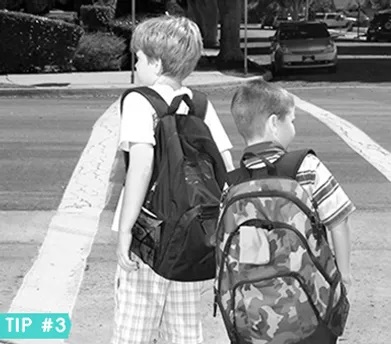
Tip #3
Look both ways before crossing a street.
Look left, right, and left again to ensure a safe crossing. Be especially aware of turning vehicles.
Tip #4
At signalized intersections, cross only when the signal indicates it is safe to do so.
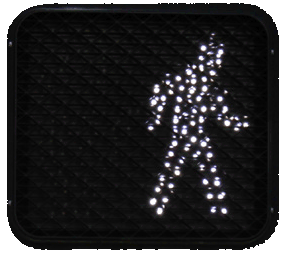 Walk Signal: Start crossing. Be sure to look both ways before entering the roadway.
Walk Signal: Start crossing. Be sure to look both ways before entering the roadway. Flashing or counting down hand: Don’t start! Do not enter the roadway; finish crossing if you’ve already started.
Flashing or counting down hand: Don’t start! Do not enter the roadway; finish crossing if you’ve already started.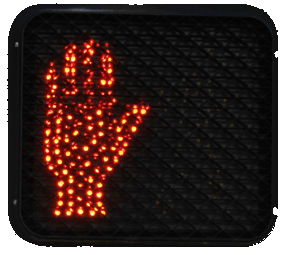 Steady hand: Don’t cross! Do not enter the roadway. Yield to vehicles until the "walk" sign appears.
Steady hand: Don’t cross! Do not enter the roadway. Yield to vehicles until the "walk" sign appears.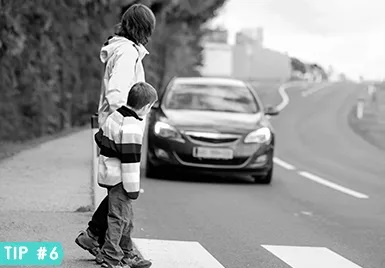
Tip #5
Watch for vehicles and stay out of blind spots when around buses.
A distance of ten feet surrounding a bus is considered the bus danger zone. In this area it is difficult for a driver to see a pedestrian. When exiting a bus avoid the danger zone and cross only at designated crosswalks, never directly in front of the bus.
Tip #6
Make eye contact with drivers before crossing streets.
Be sure that a driver acknowledges your presence to ensure a safe crossing.
Tip #7
Be seen while walking in the dark.
Wear reflective materials and white or bright colors at night to increase visibility. Avoid dark clothing when possible.
Bicycling Safely
Tip #8
Bicyclists are required to stop and yield at traffic signals and stop signs.
State law requires bicyclists to operate with the same rights and duties applicable to a driver operating a motor vehicle.
Tip #9
Use hand signals to let others know when you’re turning, changing lanes, or stopping.
Signaling your intentions gives drivers notice of your movements. Look over your shoulder and up ahead (scan), then signal your turn and make your move.
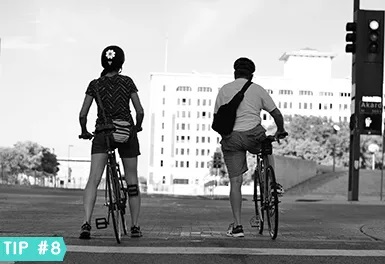
Tip #10
Be alert.
Be aware of other vehicles and predict movements of drivers and pedestrians. Anticipate turning movements and opening car doors to avoid collisions.
Tip #11
Ride as far to the right as practicable.
Practicable does not mean possible. Do not ride in the gutter, avoid hazardous conditions such as debris and potholes. Be sure to leave enough room to avoid hazards like parked cars with opening doors. A cyclist may ride in the middle of the lane if the lane is less than 14 feet wide or is too narrow to safely operate with a motor vehicle side by side.
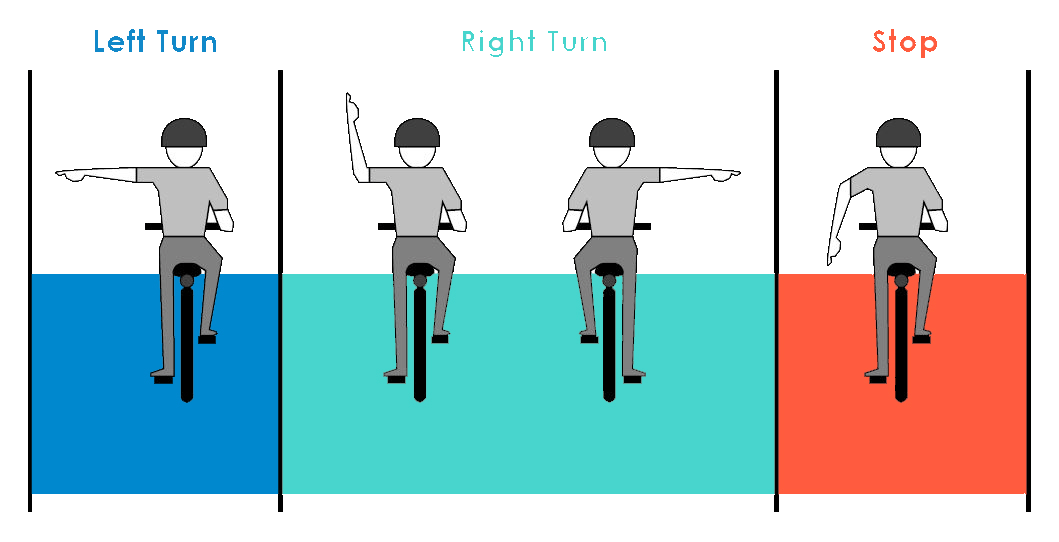
Tip #12
Always ride in the same direction as traffic.
Bicyclists operate as vehicles when in the roadway and are required to travel in the same direction as other drivers. Never ride into the flow of oncoming vehicles– this wrong-way travel is one of the leading causes of bicycle-motorist crashes.
Tip #13
Claim your space at intersections.
When approaching an intersection, use the rightmost lane going in your destination direction. When making a left turn with multiple turn lanes, select the rightmost lane turning left. Position yourself at intersections to be seen to avoid a crash.
Tip #14
Be seen while riding at night.
Wear reflective materials and white or bright colors. When bicycling at night, a front headlight and a rear reflector or rear red light are required by State law (see Sec. 551.104. Safety Equipment).

Driving Safely Near People Bicycling and Walking
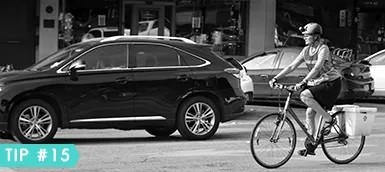
Tip #15
Allow a minimum of three feet when passing a bicyclist.
Allowing a minimum of three feet when passing a bicyclist permits motorists and bicyclists to maneuver safely.
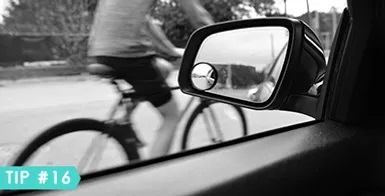
Tip #16
Look out for bicyclists when opening your door while parallel parked.
Bicyclists may be riding closer to the right of the travel lane, putting them in the path of an opening car door. Watch for bicyclists before opening your door.
Tip #17
Bike lanes are for bicyclists.
As a driver, never block or park in a bike lane. Preventing bicyclists from using designated bike lanes on roadways creates unsafe circumstances for all road users.
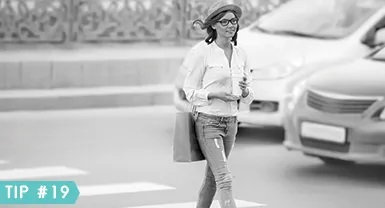
Tip #18
Crosswalks are for pedestrians.
As a driver, never block or park in a crosswalk. Preventing pedestrians from using designated crosswalks creates unsafe circumstances for all road users.
Tip #19
Stop for crossing pedestrians.
Stop and yield to pedestrians in crosswalks. When approaching an intersection, slow down and scan the road and sides of the road ahead for pedestrians.

Tip #20
Treat bicycles as motor vehicles.
A bicyclist has the right to ride in the center of most road lanes.
Tip #21
Look out for children in school zones.
Maintaining the legal speed limit increases safety for all road users. School zone speed limits are especially important; as a driver be aware of children’s unpredictable movements in these zones.